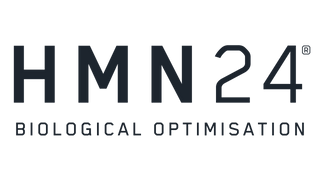Alcohol is often blamed as the main cause of poor sleep and sluggish mornings. In reality, it’s usually just the final act in a chain of events set in motion long before the first glass is poured.
Stressful day?
Overstimulated brain?
Social pressure?
Habit?
A 2023 UK survey found that 78% of adults who drink do so primarily for relaxation or stress relief. The paradox is that the very thing we turn to for calm is one of the biggest disruptors of the process we need most for true restoration: sleep.
Alcohol’s Real Impact on Sleep
Alcohol is a sedative. It can help you fall asleep faster, but the quality of that sleep is compromised. Studies show it reduces rapid eye movement (REM) sleep, the stage essential for memory consolidation, emotional regulation, and learning. It increases awakenings in the second half of the night and disrupts deep, slow-wave sleep. This leaves the brain and body under-recovered the next day.
Even though alcohol’s half-life is shorter than caffeine’s, roughly four to five hours versus five to seven for caffeine, that doesn’t mean it’s harmless. One or two drinks too close to bedtime can leave you running on incomplete sleep cycles.
The Coffee–Wine Loop in High-Stress Professions
Consider the “teaching culture”, though the same pattern exists in healthcare, law, corporate leadership, and other high-output fields.
Coffee in the morning and throughout the day keeps energy levels up in the face of long hours, heavy cognitive load, and unrelenting demands. The problem? Caffeine taken even six hours before bed can reduce total sleep time by about an hour and reduce deep sleep.
After a day spent in high-alert mode with elevated stress hormones, alcohol in the evening feels like the fastest way to switch off. The result is sedation, not true restorative sleep. Over time, this becomes a cycle:
-
Caffeine disrupts sleep.
-
Poor sleep creates fatigue.
-
Fatigue drives more caffeine use.
-
Higher arousal in the evening makes alcohol more appealing.
A BMJ Open study found that work-related stress increased the odds of hazardous drinking by 45% in educators. The profession changes, but the cycle is the same: a stimulant to push through the day, a depressant to shut it down.

Why You Drink Is More Important Than Whether You Drink
The bigger question isn’t whether you should drink, but why you are drinking. If the answer is to undo the effects of your day, the real solution lies in changing the day itself.
If you address the triggers — the overstimulation, the lack of recovery time, the evening habits that delay natural wind-down — you remove the need for alcohol as the shortcut to relaxation.
This is where circadian-aligned routines and targeted nutritional support can make the difference. HMN24 was built for exactly this. RISE primes your morning and early day energy without excessive stimulant load, FLOW sustains focus without the afternoon crash, and PRE-SLEEP supports deep, high-quality rest so you wake up recovered. The goal isn’t to replace one crutch with another; it’s to remove the need for crutches altogether and utilise something that drives performance.
By managing the day intelligently, you improve the night. By improving the night, you change how you wake, perform, and recover.
Breaking the Cycle
Evidence-based strategies to disrupt the coffee–wine loop include:
-
Keep caffeine use in the first 6–8 hours after waking to protect evening sleep.
-
Build deliberate downregulation routines , breathwork, stretching, reduced evening light exposure, rather than relying on alcohol.
-
Integrate nutritional support that targets energy, focus, hydration, and sleep quality at the right times of day.
-
Protect morning light exposure to stabilise your circadian rhythm and evening darkness to signal rest.
By fixing the day, you change the night.
By changing the night, you change how you wake up.
Sometimes the problem isn’t the alcohol. It’s everything that happened before you picked it up, and that’s the part you can rewrite.
References:
-
Drake, C., Roehrs, T., Shambroom, J., & Roth, T. (2013). Caffeine effects on sleep taken 0, 3, or 6 hours before going to bed. Journal of Clinical Sleep Medicine, 9(11), 1195–1200.
-
Ebrahim, I. O., Shapiro, C. M., Williams, A. J., & Fenwick, P. B. C. (2013). Alcohol and sleep I: Effects on normal sleep. Alcoholism: Clinical and Experimental Research, 37(4), 539–549.
-
McEwen, B. S. (2007). Physiology and neurobiology of stress and adaptation: central role of the brain. Physiological Reviews, 87(3), 873–904.
-
Nadrowska, N., et al. (2021). Work-related stress and hazardous drinking among educators: a cross-sectional study. BMJ Open, 11(8), e046656.
-
Roehrs, T., & Roth, T. (2001). Sleep, alcohol, and alcohol abuse. Alcohol Research & Health, 25(2), 101–109.
-
Sleep Foundation. (2023). Alcohol and sleep. Retrieved from https://www.sleepfoundation.org/nutrition/alcohol-and-sleep
Blog posts
The Science Your Meeting Room Is Getting Wrong
Most meeting rooms are designed for convenience, not cognition. Rising carbon dioxide, poor ventilation and environmental load quietly shut down the human brain long before the meeting agenda does. This article breaks down the science and explains why performance starts with the air we breathe.
Gym Equipment Manufacturers, Gym Spaces, and Why They Need to Adapt
The fitness industry is undergoing its biggest transformation in decades. Gym equipment manufacturers can no longer rely on selling hardware alone — modern users demand outcomes, evidence, personalised systems, and environments that support real human performance. This article explores the data, science, and commercial forces driving this shift.
The Hidden Architecture of Sleep: Why Three Microclimates Determine How Well You Rest
You don’t sleep on a mattress, you sleep inside three thermal microclimates that sit between your body, your clothing and your bedding. These microclimates determine how quickly you fall asleep, how deeply you stay asleep and how well you recover. This piece explains the science, the technologies that improve it, and how to optimise your environment even without tech.







